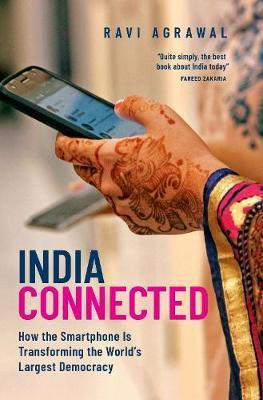India Connected

India Connected
As always with India, the numbers are staggering: in 2000, 20 million Indians had access to the internet; by 2017, 465 million were online, with three Indians discovering the internet every second. By 2020, India's online community is projected to exceed 700 million, and more than a billion Indians are expected to be online by 2025. In the course of a single generation, access to the internet has progressed from dial-up connections on PCs, to broadband access, wireless, and now 4G data on
phones. The rise of low-cost smartphones and cheap data plans has meant the country leapfrogged the baby steps their Western counterparts took toward digital fluency. The results can be felt in every sphere of life, upending traditions and customs and challenging conventions. Nothing is untouched, from
arranged marriages to social status to business start-ups, as smartphones move the entire economy from cash-based to credit-based. Access to the internet is affecting the progress of progress itself. As Agrawal shows, while they offer immediate and sometimes mind-altering access to so much for so many, smartphones create no immediate utopia in a culture still riven by poverty, a caste system, gender inequality, illiteracy, and income disparity. Internet access has provided greater opportunities
to women and changed the way in which India's many illiterate poor can interact with the world, but it has also meant that pornography has become more readily available. Under a government keen to control content, it has created tensions. And in a climate of hypernationalism, it has fomented
violence and even terrorism.
The influence of smartphones on "the world's largest democracy" is nonetheless pervasive and irreversible, and India Connected reveals both its dimensions and its implications.
PRP: 199.29 Lei
Acesta este Pretul Recomandat de Producator. Pretul de vanzare al produsului este afisat mai jos.
179.36Lei
179.36Lei
199.29 LeiIndisponibil
Descrierea produsului
As always with India, the numbers are staggering: in 2000, 20 million Indians had access to the internet; by 2017, 465 million were online, with three Indians discovering the internet every second. By 2020, India's online community is projected to exceed 700 million, and more than a billion Indians are expected to be online by 2025. In the course of a single generation, access to the internet has progressed from dial-up connections on PCs, to broadband access, wireless, and now 4G data on
phones. The rise of low-cost smartphones and cheap data plans has meant the country leapfrogged the baby steps their Western counterparts took toward digital fluency. The results can be felt in every sphere of life, upending traditions and customs and challenging conventions. Nothing is untouched, from
arranged marriages to social status to business start-ups, as smartphones move the entire economy from cash-based to credit-based. Access to the internet is affecting the progress of progress itself. As Agrawal shows, while they offer immediate and sometimes mind-altering access to so much for so many, smartphones create no immediate utopia in a culture still riven by poverty, a caste system, gender inequality, illiteracy, and income disparity. Internet access has provided greater opportunities
to women and changed the way in which India's many illiterate poor can interact with the world, but it has also meant that pornography has become more readily available. Under a government keen to control content, it has created tensions. And in a climate of hypernationalism, it has fomented
violence and even terrorism.
The influence of smartphones on "the world's largest democracy" is nonetheless pervasive and irreversible, and India Connected reveals both its dimensions and its implications.
Detaliile produsului









